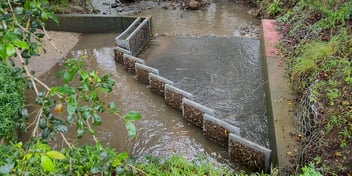Cleaner waterbody strategy for Fraser Coast
Queensland's Fraser Coast Council has voted to adopt the recommendations of a new Waterbody Management strategy aimed at balancing community expectations with stormwater management.
The strategy made a number of important recommendations, including managing nuisance waterbird populations, establishing and maintaining terrestrial and aquatic plants and treating and removing pollutants from stormwater before it enters a waterbody.
“The Fraser Coast Waterbody Management Strategy will assist Council to sustainably manage our 50 waterbody systems,” Councillor Zane O’Keefe said.
It was one of a number of water policies recently adopted by the council: it also endorsed guiding management plans for the Ululah Lagoon and Lowlands Lagoons, and adopted a Council Policy for Constructed Waterbodies.
Community consultation revealed that there is a significant range in public understandings of waterbody management.
“Some residents see the waterbodies as lakes and want them to be cleaned of water plants and have mown grass up to the waterline,” O’Keefe said.
“Unfortunately, in some instances, trees and shrubs around the lagoons and reeds along the water edge have been destroyed. The water plants within and around waterbodies play a crucial role in waterbody health.
O’Keefe explained that the new strategy balanced residents’ expectations with an approach that managed waterbodies as part of the stormwater system, recognising that waterbodies have to work as stormwater detention basins as well as havens for wildlife in suburbia.
The report identified a number of key practises that would support these goals, which included:
- Establishing and maintaining terrestrial and aquatic plants around and within waterbodies;
- Ensuring waterbody edges are safe;
- Treating and removing pollutants from stormwater before it enters a waterbody;
- Using aquatic weed harvesting to target declared aquatic weeds;
- Manage nuisance waterbird populations to reduce nutrient inputs, by discouraging waterbird feeding and reducing weed trees overhanging water;
- Consider opportunities to fill isolated pockets and stagnant areas, reduce waterbody depth to increase flushing and water turnover, and create wetlands in shallow waterbody areas.
The strategy also recognised that dredging or deepening waterbodies were practices to be avoided due to high costs and environmental impacts.
“Historically, council has dealt with waterbody management issues individually as they arose,” O’Keefe said.
“Generally, urban waterbodies tend to decline in condition over time, so we needed the strategy to inform future management.
“A well-designed waterbody can add value to the urban landscape in terms of visual amenity and wildlife habitat.”


